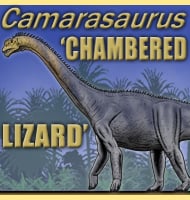Rayososaurus
In Depth A very small sauropod, Rayososaurus is considered to be very similar to another genus called Rebbachisaurus. Because Rayososaurus is from South America and Rebbachisaurus is from Africa, this has given rise to the notion that these two continents were joined for much longer than previously thought back in the Cretaceous. Further Reading – … Read more

